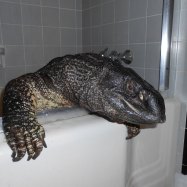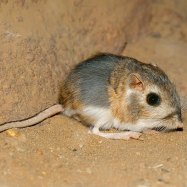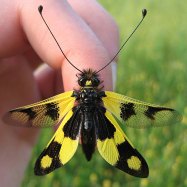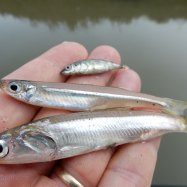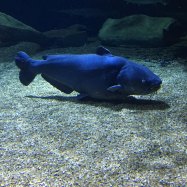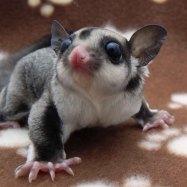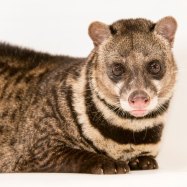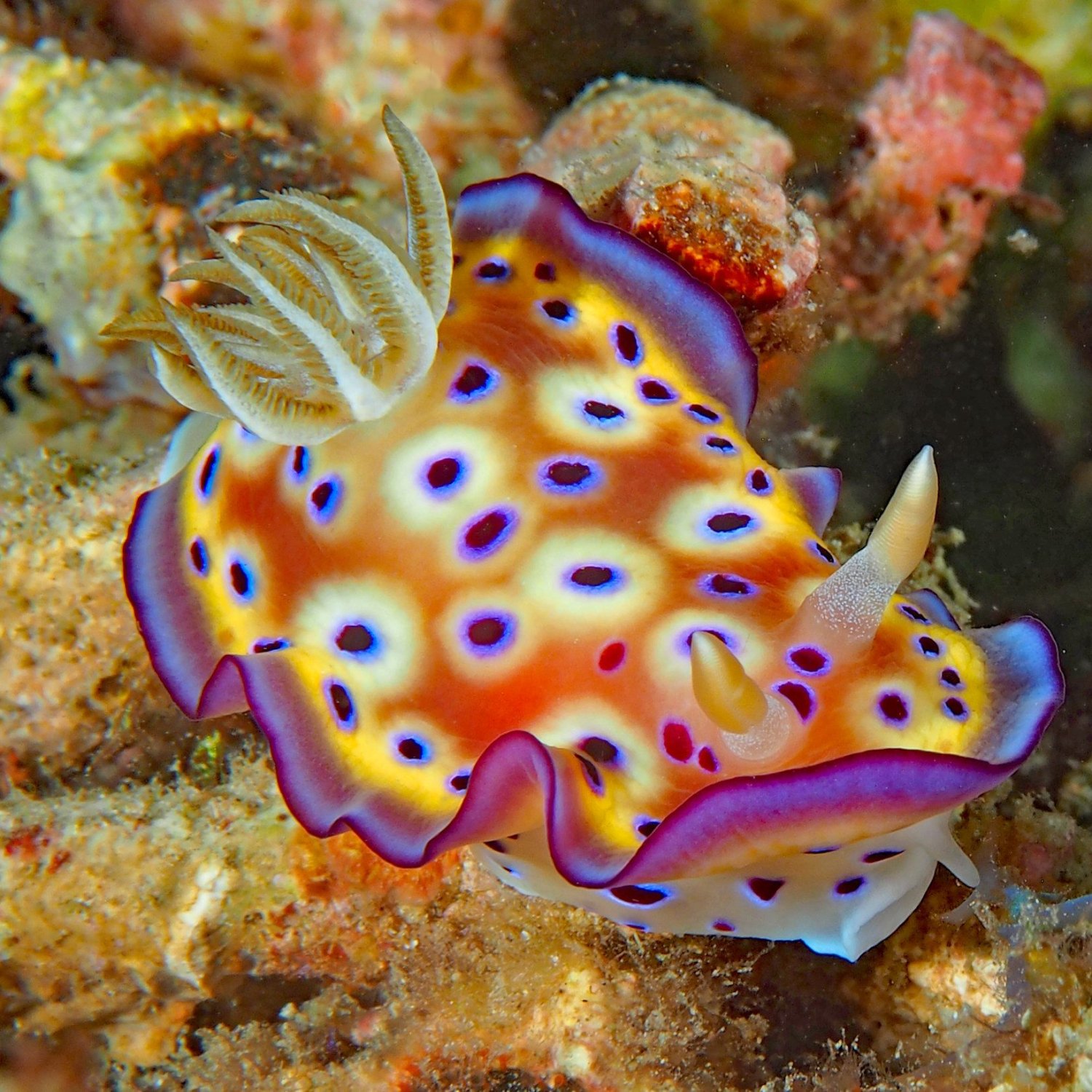
Sea Slug
0.2-30 centimeters
Sea slugs are fascinating creatures found in the ocean, ranging from 0.2 to 30 centimeters in size. These slug-like animals belong to various families and can be seen in vibrant colors and patterns. Scientists believe that these unique animals can hold the key to understanding ocean ecosystems. Keep an eye out for these tiny but mighty creatures on your next ocean adventure! #SeaSlug #OceanLife
Animal Details Summary:
Common Name: Sea Slug
Kingdom: Animalia
Habitat: Marine
The Fascinating World of the Sea Slug: Bright and Colorful Creatures of the Ocean
The ocean is a vast, mysterious, and diverse world, filled with countless species of marine life. From tiny plankton to massive whales, the depths of the ocean hold a mesmerizing array of creatures, each with its own unique characteristics and adaptations. Among these creatures, one stands out for its striking beauty and vibrant colors – the Sea Slug.Scientifically known as Nudibranchia, the Sea Slug is a member of the Mollusca phylum and Gastropoda class Sea Slug. It belongs to the order Nudibranchia, which consists of over 3,000 distinct species, making it one of the largest groups of sea slugs. These fascinating creatures can be found in almost every ocean around the world, from the polar waters to the tropics, making them truly global residents.
The name Nudibranchia, when translated from Latin, means naked gills. This name is given because these sea slugs lack a hard protective shell like other snails and instead have their gills exposed. They come in a variety of shapes, sizes, and colors, ranging from tiny creatures as small as 0.2 centimeters to larger creatures measuring up to 30 centimeters in length.
With their bright and colorful appearances, Sea Slugs are often mistaken for plants or corals. However, they are indeed animals and are classified as carnivores. Their vibrant colors serve as a warning to potential predators, as they are poisonous to eat Striped Hyena. Some species even have the ability to absorb the venom of their prey and use it as their own defense mechanism.
Habitat and Distribution
As mentioned earlier, Sea Slugs are found in almost all oceans across the globe, with the exception of a few landlocked bodies of water. These creatures are mainly found in shallow tropical and temperate waters but can also be found in colder regions, including the Arctic and Antarctic. They can be seen in a variety of habitats, such as coral reefs, kelp forests, sandy bottoms, and rocky shores.One of the most remarkable features of these creatures is their wide geographical distribution. Some species can be found in almost every ocean, while others are restricted to specific regions. This adaptability and versatility have allowed them to thrive in different environments and make them an important part of marine ecosystems.
Body Shape and Coloration
One of the most striking features of Sea Slugs is their unique body shape. Unlike other gastropods, they do not have a single muscular foot for movement. Instead, their entire body moves like a slug, hence their name. They have a soft body, and their skin is covered in specialized tentacles called cerata. These cerata serve multiple functions, from protection to respiration and digestion.The most eye-catching feature of these creatures, however, is their bright and colorful appearance. Their coloration can vary significantly, with some species exhibiting rainbow-like hues, while others are more muted and earth-toned. Their colors are not only a warning to predators but also serve as a form of communication among themselves and for mating purposes.
The Sea Slug's coloration is not just limited to their body; they also have the ability to change their color depending on the environment they are in. This process, known as camouflage, helps them blend in with their surroundings and become less vulnerable to predators.
Feeding Method
Being carnivorous creatures, Sea Slugs primarily feed on a variety of marine invertebrates, including sponges, squid, jellyfish, and anemones. Some species have developed specialized feeding methods, such as incorporating the nematocysts (stinging cells) of their prey into their own cerata for their defense. They have an impressive array of teeth that they use to scrape off their food and break it down into smaller pieces.Interestingly, some species of Sea Slugs have developed a mutualistic relationship with algae. The Sea Slug provides the algae a safe and stable environment for photosynthesis in its body while the algae provide the slug with energy in the form of sugars. This symbiotic relationship helps both the sea slug and the algae to thrive in their respective habitats.
In some cases, Sea Slugs have been observed to engage in what is known as kleptopredation, where they steal stinging cells from their prey and use it themselves for protection and hunting.
The Role of Sea Slugs in the Ocean
While Sea Slugs may seem like just another beautiful creature in the vast ocean, they play a vital role in the marine ecosystem. As predators, they help control the populations of their prey, ensuring that the ecosystem remains balanced. And as prey, they serve as an important food source for other marine animals, including fish and sea stars.Their unique ability to absorb venom and their role in maintaining the health of coral reefs have made them crucial in the development of new medical treatments and advances in cancer research. They are also used as bioindicators, meaning their presence or absence can indicate the health of a particular marine environment.
Threats and Conservation Efforts
Despite their importance in the ocean, Sea Slugs face many threats that endanger their populations. Habitat destruction, pollution, overfishing, and climate change are some of the primary concerns for Sea Slug populations. These creatures are sensitive to changes in their environment, and any disturbance can have a significant impact on their survival.To address these threats, various conservation efforts are in place to protect Sea Slugs and their habitats. Some countries have implemented laws and regulations to prevent overfishing and protect vulnerable species of Sea Slugs. Educational initiatives are also being undertaken to raise awareness about the importance of these creatures and the need to protect them.
Final Thoughts
The world underwater is a beautiful and complex one, and the Sea Slug is a testament to its diversity and wonder. From their incredible coloration to their unique feeding methods, these creatures have captured the fascination of researchers and marine enthusiasts alike. As we continue to learn more about the ocean and its inhabitants, it is essential to remember the delicate balance of its ecosystems and the role every species, no matter how small, plays in it. And the small yet vibrant Sea Slug is a perfect example of this interconnectedness.

Sea Slug
Animal Details Sea Slug - Scientific Name: Nudibranchia
- Category: Animals S
- Scientific Name: Nudibranchia
- Common Name: Sea Slug
- Kingdom: Animalia
- Phylum: Mollusca
- Class: Gastropoda
- Order: Nudibranchia
- Family: Various
- Habitat: Marine
- Feeding Method: Carnivorous
- Geographical Distribution: Worldwide
- Country of Origin: N/A
- Location: Ocean
- Animal Coloration: Bright and Colorful
- Body Shape: Slug-like
- Length: 0.2-30 centimeters
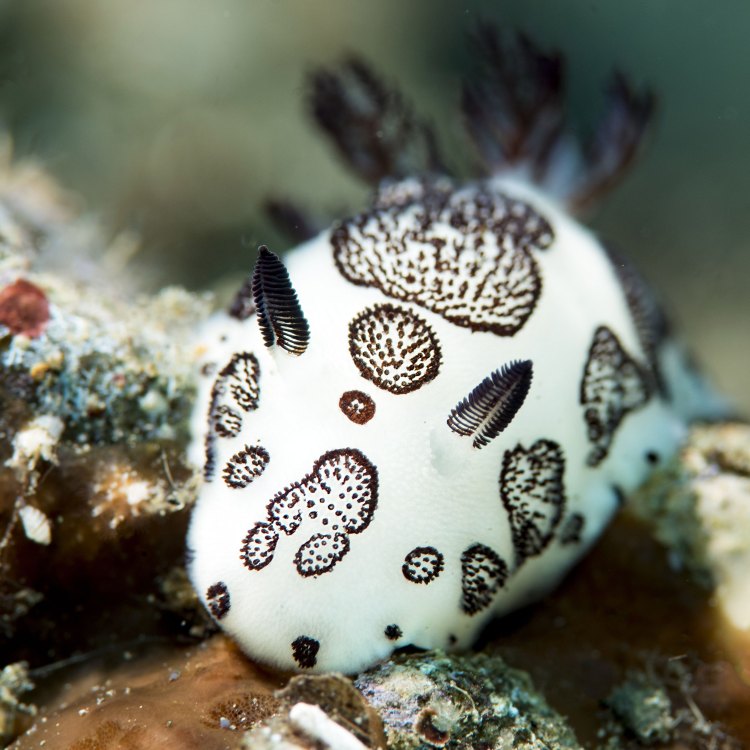
Sea Slug
- Adult Size: Varies by species
- Average Lifespan: 1-5 years
- Reproduction: Sexual
- Reproductive Behavior: Hermaphroditic
- Sound or Call: No sound production
- Migration Pattern: Non-migratory
- Social Groups: Solitary
- Behavior: Slow-moving and sedentary
- Threats: Habitat loss, pollution, predation
- Conservation Status: Varies by species
- Impact on Ecosystem: Some species have a mutualistic relationship with algae
- Human Use: Marine aquarium trade, scientific research
- Distinctive Features: Extravagant and flamboyant body structures
- Interesting Facts: Can have up to 3 pairs of horns on their heads
- Predator: Some species have specialized defenses against predators
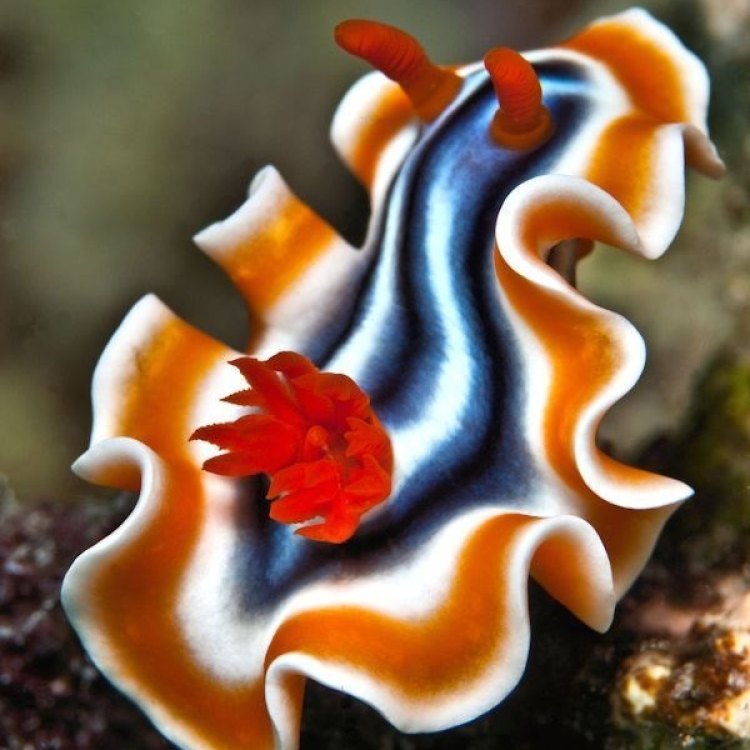
Nudibranchia
The Fascinating World of Sea Slugs: Extravagant and Flamboyant Creatures
When we think of sea creatures, the first image that may come to mind is that of a colorful fish, a menacing shark, or maybe a graceful dolphin. But there is another creature that dwells in the depths of the ocean, often overlooked and underrated – the sea slug.Sea slugs, also known as nudibranchs, are a diverse group of marine gastropod mollusks that can be found in all of the world's oceans. They come in a variety of shapes, sizes, and colors, with over 3,000 known species PeaceOfAnimals.Com. Let's dive into the fascinating world of sea slugs and discover why they are truly one of a kind.
The Basics
Sea slugs are relatively small creatures, with the size varying greatly between species. Some can grow to be as little as a few millimeters, while others can reach up to 12 inches in length. They have a soft, unsegmented body, with no visible shell like their land snail relatives. Their body structure is often described as being similar to that of a slug on land, hence their name.The average lifespan of a sea slug is 1-5 years, depending on the species and habitat. They are found in a wide range of environments, from shallow tide pools to deep sea trenches. Their preference for habitat often depends on their specific food source and reproductive needs.
Reproduction and Behavior
Sea slugs have a unique reproductive behavior – they are hermaphroditic, meaning they possess both male and female reproductive organs Sequined Spider. This allows them to reproduce with any individual of their species, regardless of their sex. However, they cannot fertilize their own eggs and need to mate with another sea slug to reproduce.Their courtship and mating process involves a dance-like behavior, where they intertwine and exchange sperm. They then lay their eggs in clusters or ribbons, depending on the species. After hatching, the larvae go through a series of stages before developing into an adult.
Distinctive Features
One of the most striking features of sea slugs is their extravagant and flamboyant body structures. Their bodies are covered in a multitude of colors and patterns, making them resemble underwater works of art. They also have unique appendages, such as horns, projections, and feathery gills, which vary greatly between different species.Some sea slugs have developed interesting defense mechanisms, such as brightly colored bodies that warn predators of their toxicity. Others have specialized organs, such as the ability to release ink or secrete sticky mucus as a means of protection.
Their Impact on the Ecosystem
While some may view sea slugs as small and insignificant creatures, they actually play a crucial role in the marine ecosystem. Some species have a mutualistic relationship with algae, where they consume the algae and incorporate its photosynthetic cells into their bodies. In turn, the algae helps the sea slug produce energy through photosynthesis.This relationship is not only beneficial for the sea slug, but it also helps maintain healthy algae populations in the ocean. Additionally, sea slugs are important food sources for larger marine animals, such as sea turtles and fish, thus contributing to the complex food web in the ocean.
Threats and Conservation Status
Unfortunately, sea slugs, like many other ocean creatures, face numerous threats to their survival. Habitat loss, pollution, and overfishing are all factors that can have devastating effects on their populations. The destruction of coral reefs, which many sea slugs rely on for food and shelter, poses a particularly significant threat.The conservation status of sea slugs varies greatly between species, with some being classified as vulnerable or endangered. However, due to the vast number of species and their diverse habitats, it is challenging to determine the exact population numbers and conservation needs of each species.
Human Use and Interesting Facts
Sea slugs are often sought after by marine aquarium hobbyists for their striking appearance. However, their collection for the trade can have negative impacts on wild populations. Proper care and handling of these delicate animals are crucial for their survival and sustainability in the wild.Besides their use in the aquarium trade, sea slugs also have significant value in scientific research. Their unique adaptations have piqued the interest of scientists, and they are being studied for their potential use in medicine and biotechnology.
Finally, here are some fascinating facts about sea slugs that make them even more intriguing:
- Some species of sea slugs have up to 3 pairs of horns on their heads, giving them a unicorn-like appearance.
- They are often referred to as "underwater snails" because of their similarity in body shape to their land snail relatives.
- Some sea slug species have evolved to have no eyes, as they do not need them in their dark deep-sea habitats.
- Sea slugs were classified as sea snails until the late 1800s when scientists realized they belonged to a separate group.
- A single sea slug can lay up to 200,000 eggs at a time, ensuring the survival of the species.
In Conclusion
Sea slugs may not be as well-known as other ocean creatures, but they are undoubtedly one of the most fascinating and unique. Their extravagant and flamboyant appearance, paired with their interesting behavior and vital role in the marine ecosystem, make them truly remarkable creatures.As we continue to explore and learn more about the ocean, it is essential to protect these delicate creatures and their habitats. Through conservation efforts and responsible practices, we can ensure that the diverse and vibrant world of sea slugs remains for generations to come. So, next time you spot a sea slug, take a moment to appreciate its beauty and significance in our underwater world.
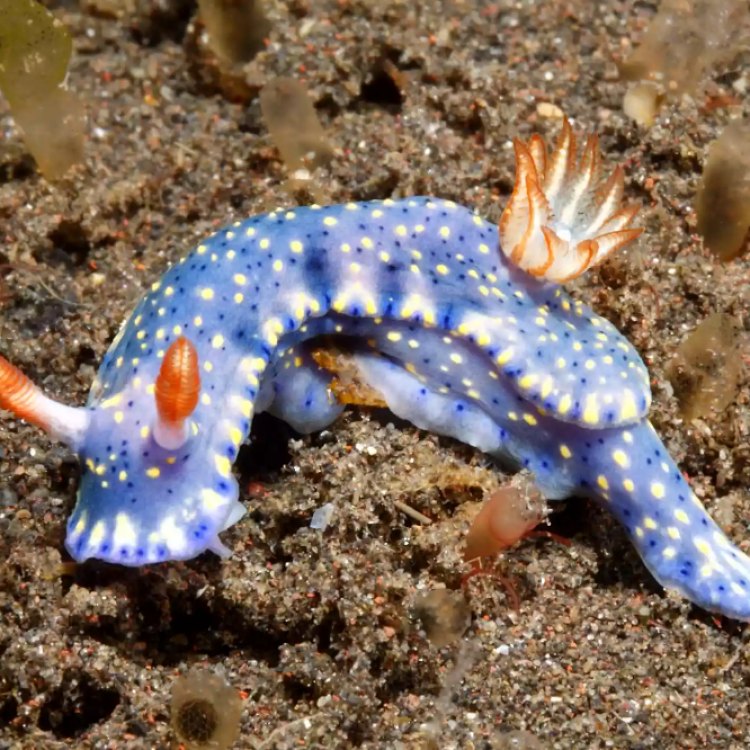
The Fascinating World of the Sea Slug: Bright and Colorful Creatures of the Ocean
Disclaimer: The content provided is for informational purposes only. We cannot guarantee the accuracy of the information on this page 100%. All information provided here may change without prior notice.

